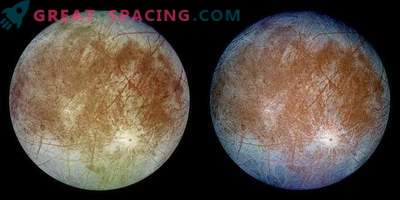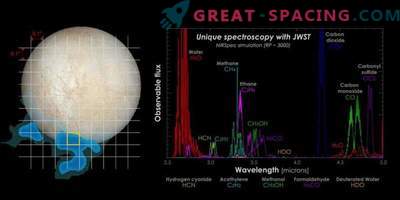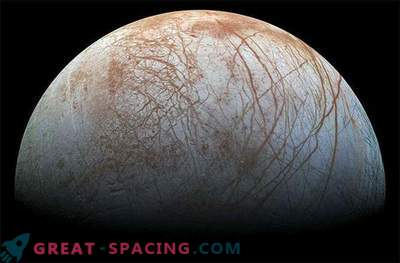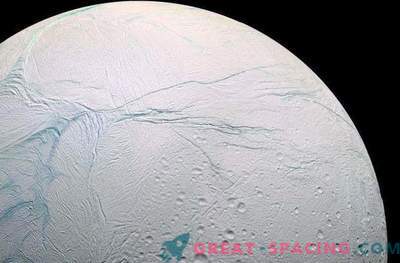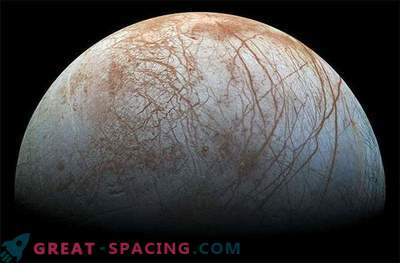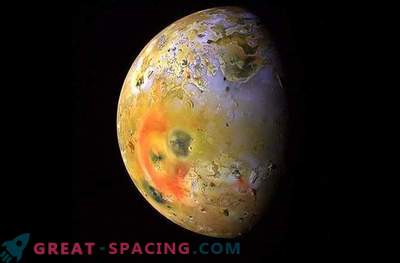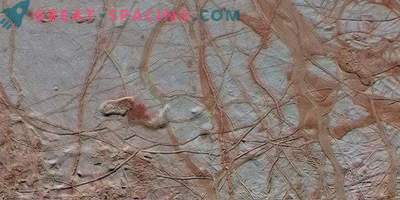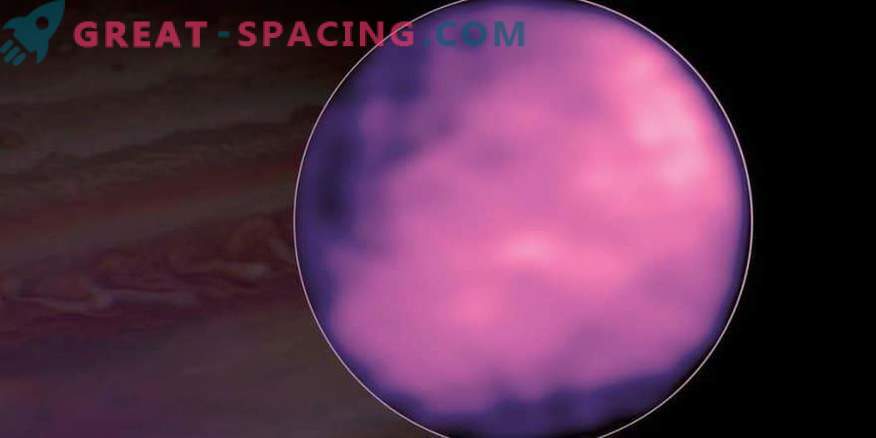
The icy satellite of Jupiter Europe is endowed with a chaotic surface cracking landscape that hints at the ancient history of geological activity. A new series of four photos of the moon in Europe, made by the ALMA sub-millimeter array, allowed us to create the first global heat map of the cold satellite of Jupiter. The resulting images reach a resolution of 200 km, which is enough to study the relationship between surface thermal changes and the main geological features of the moon.
The researchers compared the ALMA review with a thermal model from the Galileo spacecraft. The comparison made it possible to analyze temperature changes in the data and create the world's first global map of the thermal characteristics of Europe. New information also displayed a mysterious cold spot in the northern hemisphere. Europe is an oceanic world with potential geological activity, so the surface temperature is of interest.

A series of four photos of the surface of Europe by ALMA, allowing astronomers to create the first global heat map of the icy satellite of Jupiter
The information indicates that under a thin layer of ice in Europe there is an ocean of salt water in contact with a rocky core. Europe also has a relatively young surface (20-180 million years), which means there are still no thermal or geological processes found in the mechanisms.
While optical telescopes capture only the sunlight reflected by the planets, radio telescopes and millimeter (like ALMA) can capture the thermal glow emitted naturally by even the relatively cold object of the solar system, including comets, asteroids and satellites. The maximum temperature in Europe does not rise above -160 ° C.


